Let's bake a fresh loaf of 100 percent whole wheat sourdough bread at home. This whole wheat bread recipe is wholesome, flavorful, and makes the perfect sandwich bread for everyday meals. I’ve tested this recipe countless times, and each bake brings me closer to the earthy goodness that only true whole wheat flour can offer.
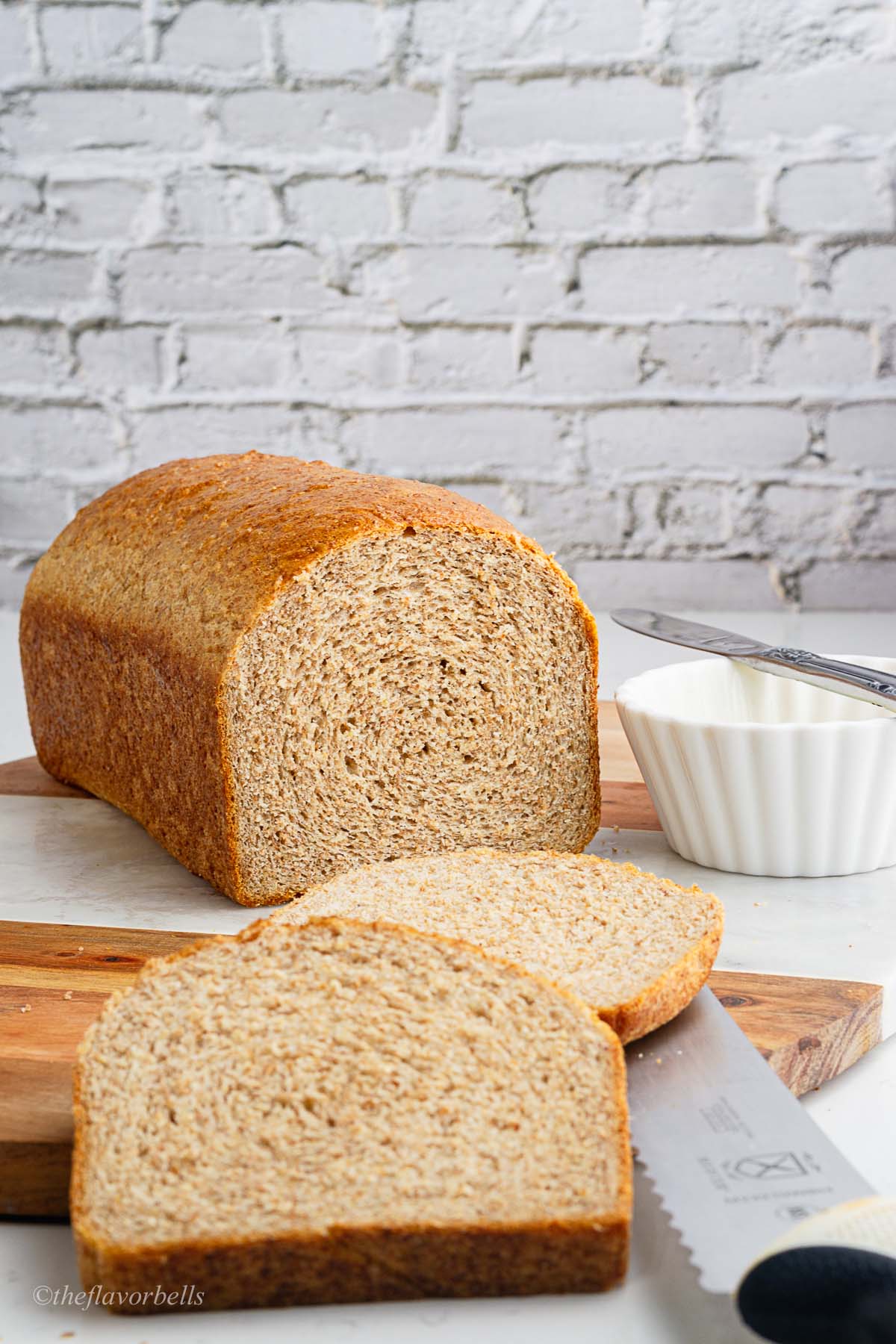
👩🏽🍳 Why You Should Make This Recipe
If you’ve been searching for the best whole wheat bread recipe, you’ve landed in the right place. Here’s why this recipe stands out:
- Wholesome ingredients: Made with 100% whole wheat, bran, and a touch of vital wheat gluten for structure.
- Great for health-conscious eaters: Packed with whole grains and fiber, making it one of the most nourishing loaves.
- Perfect for sandwiches: Slice it up to create a hearty whole wheat sandwich or enjoy it as wheat toast with butter.
- Beginner-friendly method: Detailed step-by-step process helps you master everything.
This loaf is more than just bread; it’s a classic whole wheat bread recipe that combines tradition with nourishment.
📝 Ingredient Notes
Here’s a closer look at the ingredients for this 100 percent whole wheat bread recipe and how you can adapt them to suit your pantry.
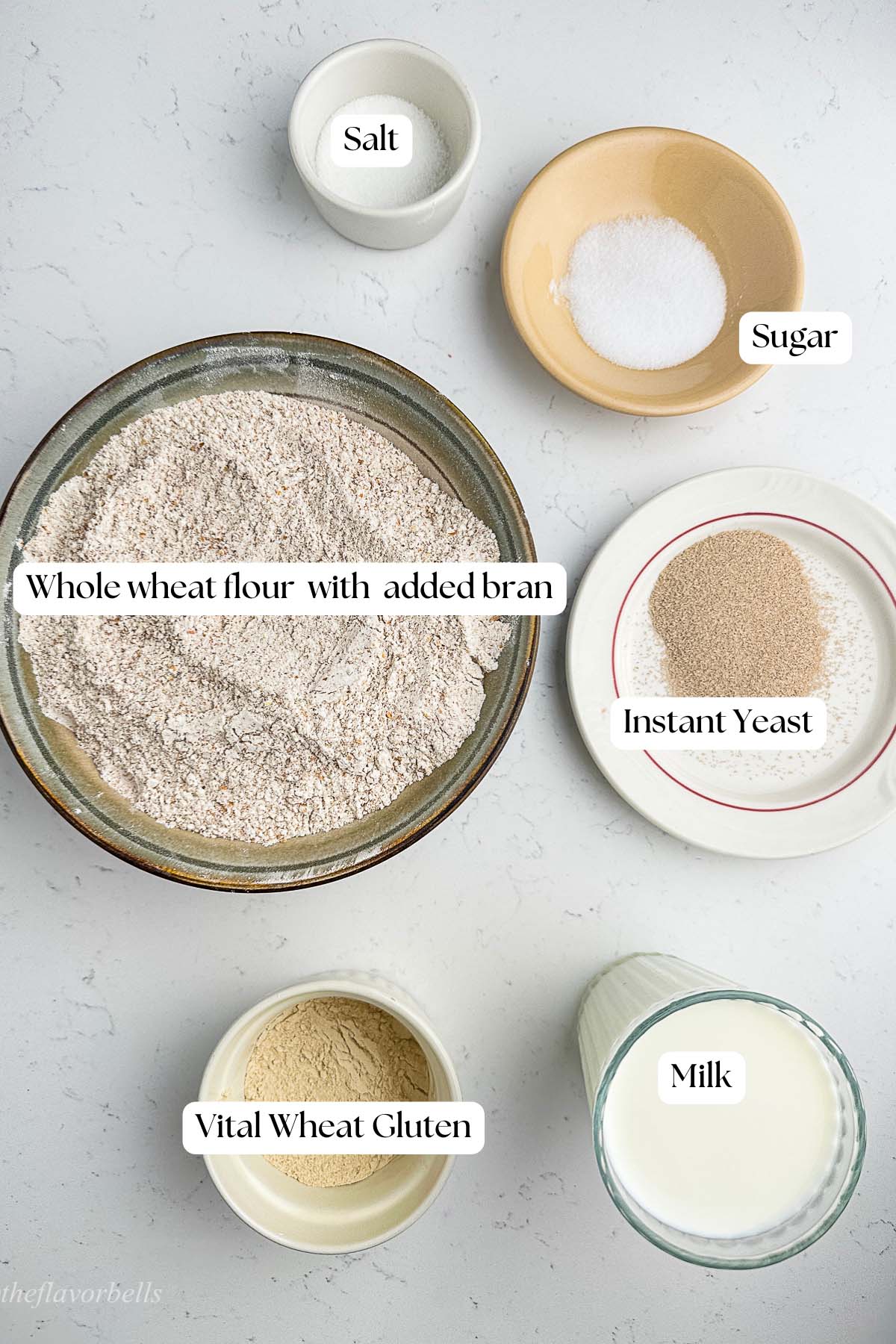
- Whole wheat flour
The star of this bread! Choose stone ground whole wheat flour or even cultured wheat flour for deeper flavor. Brands like King Arthur whole wheat bread flour are excellent. For a softer texture, you can substitute a portion with all-purpose flour, but keep in mind that you won’t get a true 100 percent whole wheat bread that way. - Bran
Bran adds extra fiber and enhances the whole-grain character. If you don’t have bran separately, you can sift whole wheat flour through a fine sieve or mesh, and what you will be left with is bran. - Milk
Enriches the dough and helps create a tender crumb. You may replace it with water or a plant-based alternative like soy or oat milk for a dairy-free loaf. - Vital wheat gluten
Since whole wheat flour is low in gluten-forming proteins, adding wheat gluten strengthens the dough. If unavailable, you can skip it, but your loaf may turn out denser. - Sugar
Just a touch balances the earthy notes of wheat flour. You may substitute with honey or maple syrup for natural sweetness. - Salt
Essential for flavor and dough structure. Sea salt or Himalayan salt works beautifully. - Instant yeast
Speeds up fermentation and ensures a good rise. You may also use active dry yeast or dry yeast, but activate it in warm water with some added sugar, first.
Each of these whole wheat bread ingredients plays a key role in texture and flavor, so choose them thoughtfully for the best results.
🔪 Instructions
1. Combining the dough
In the bowl of a stand mixer fitted with a dough hook, combine the whole wheat flour, vital wheat gluten, bran, salt, sugar, and instant yeast. Add milk gradually and mix on low speed until a shaggy dough forms. If kneading by hand, mix with a spoon or dough whisk and then bring the dough together with your hands. Don’t worry if it feels sticky at this stage—100% whole wheat bread often starts out that way.
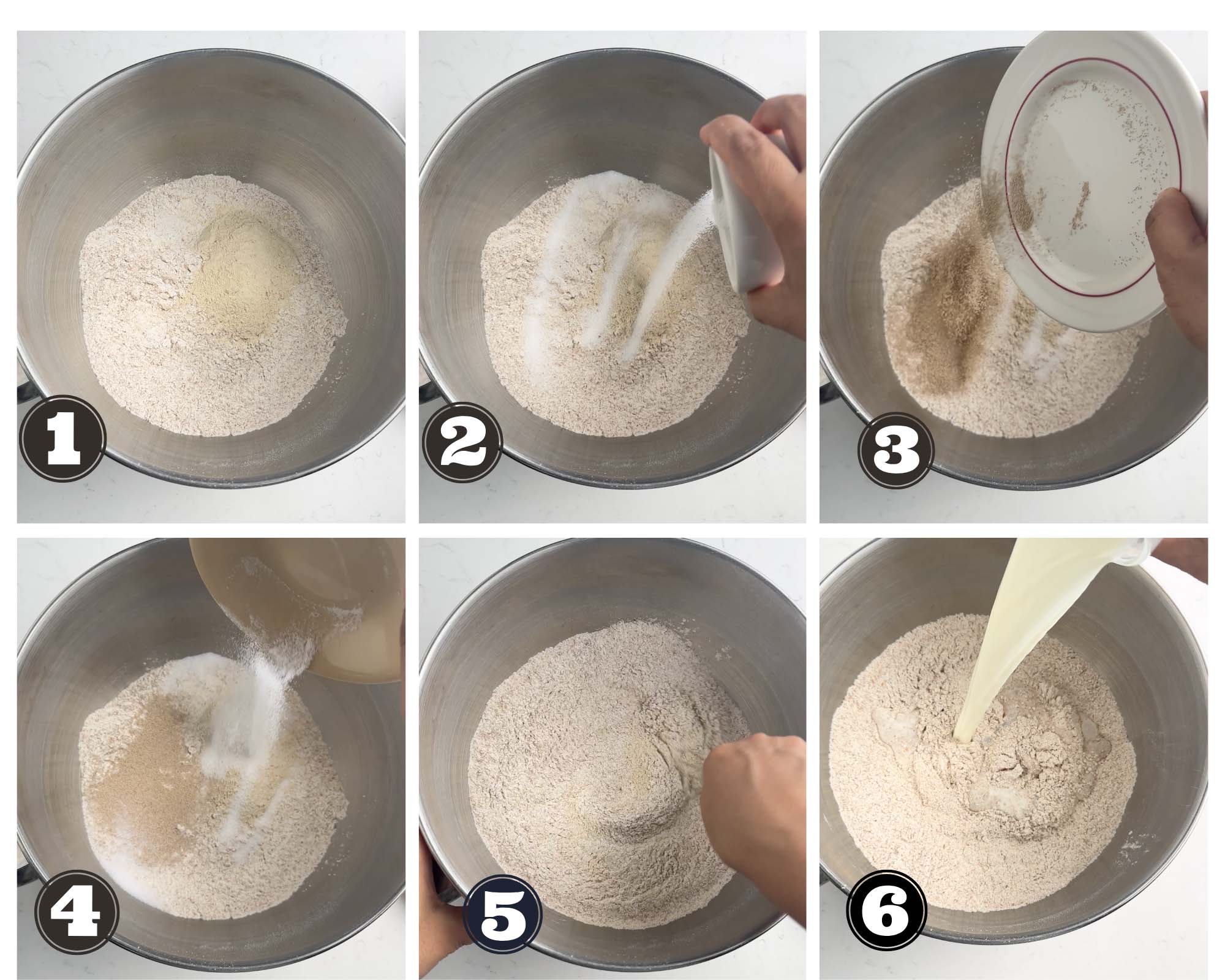
2. Kneading the dough
Knead the dough in the stand mixer on medium speed for about 8–10 minutes, or knead by hand for 12–15 minutes. The addition of vital wheat gluten strengthens the dough, so keep going until it feels smooth and elastic. Proper kneading is crucial in whole grain bread recipes because the bran in whole wheat flour tends to cut through gluten strands.
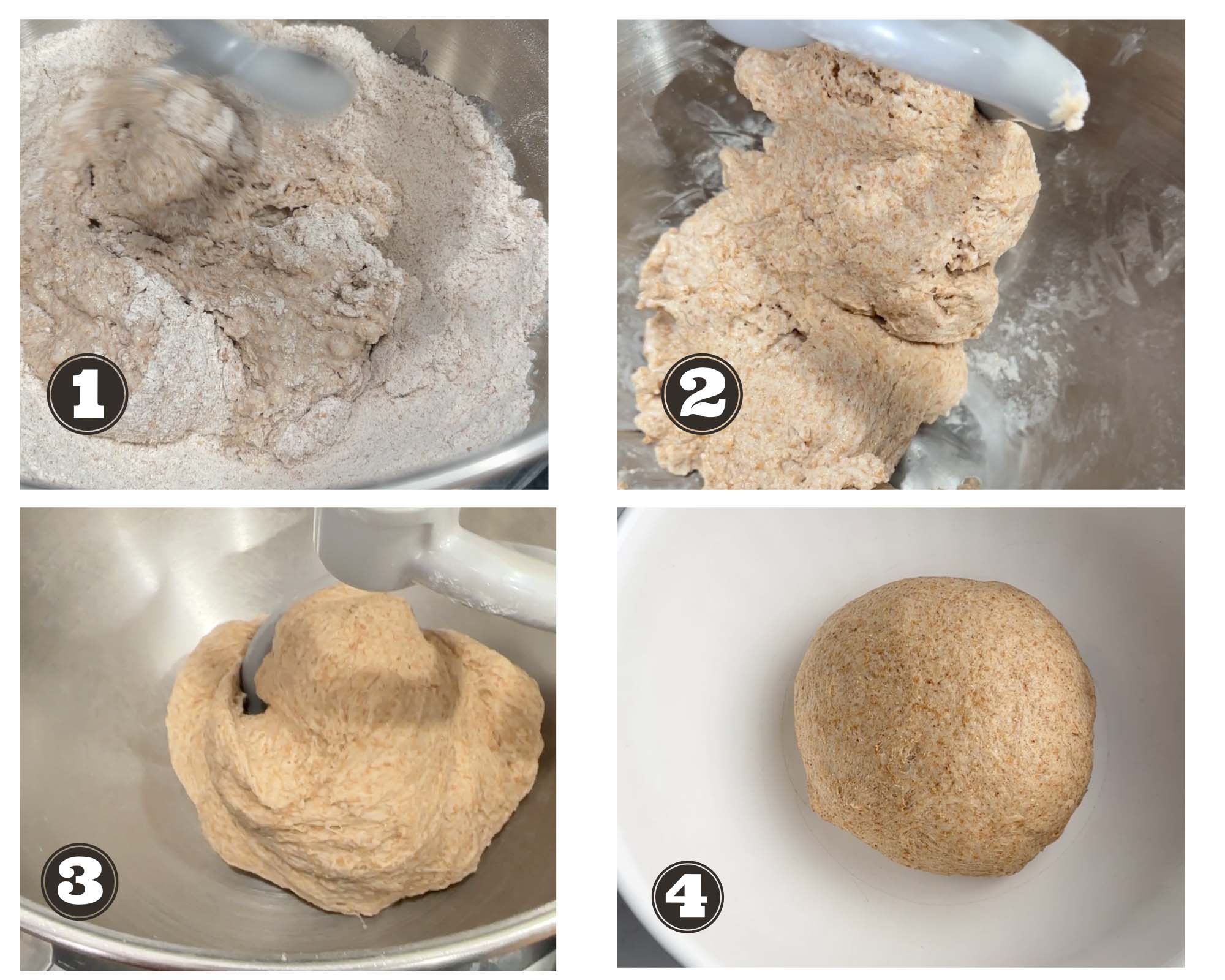
3. First rise (bulk fermentation)
Transfer the dough into a lightly oiled bowl, cover it with a damp cloth or plastic wrap, and let it rise at room temperature until it doubles in size. This usually takes 1–2 hours, depending on your kitchen temperature. This step develops flavor and ensures your 100% whole wheat bread has good volume.
4. Shaping the dough
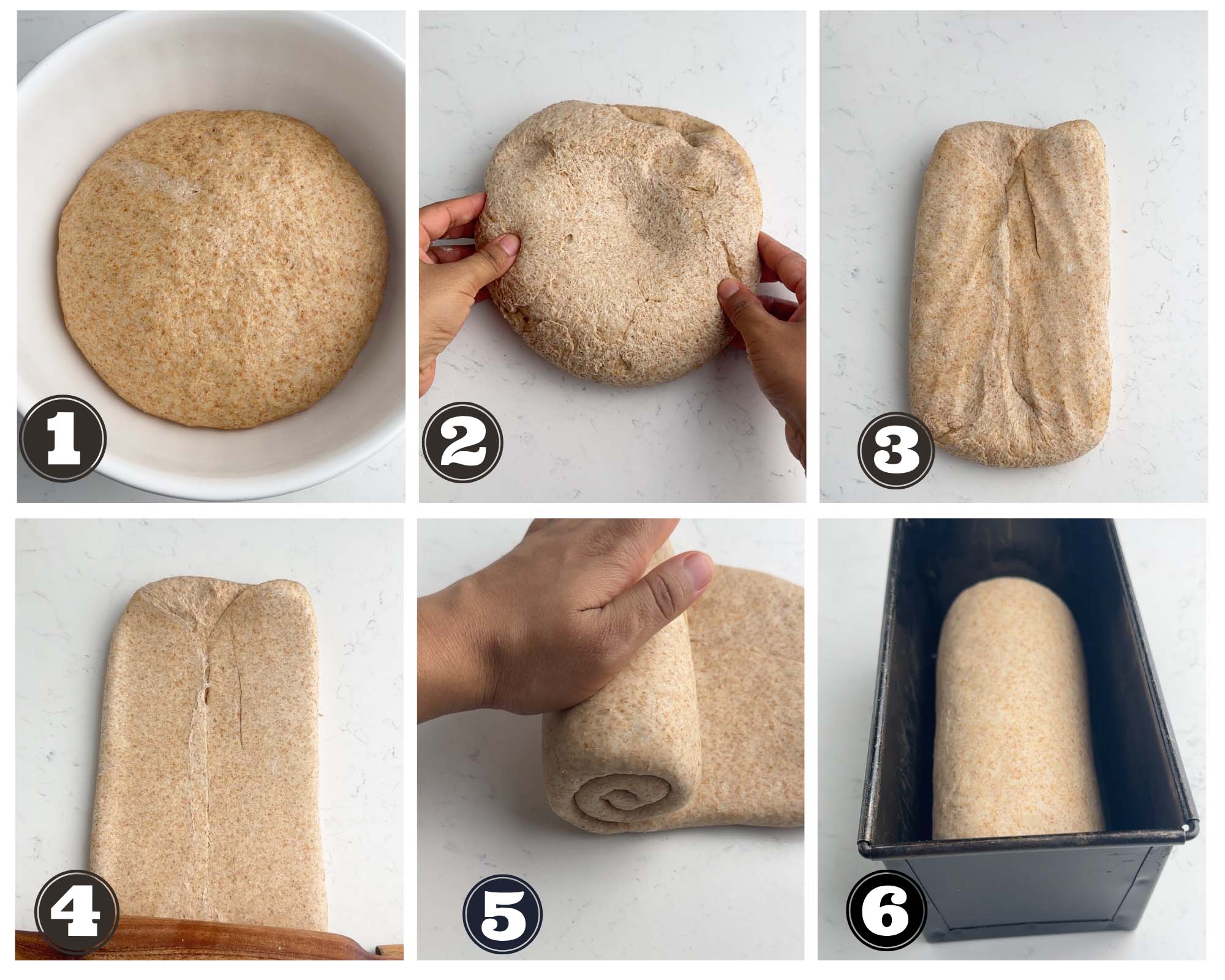
Once the dough has doubled, gently punch it down to release air. Transfer it to a lightly floured surface, then shape it into a tight log. Place it into a greased loaf pan, seam side down. Shaping tightly is important for an even rise during baking.
5. Proofing (second rise)
Cover the loaf and let it proof again for 30–45 minutes, or until it has risen about 1 inch above the rim of the loaf pan. Be careful not to over-proof, as this can make your wheat sandwich bread collapse in the oven.
6. Baking
Preheat your oven to 375°F (190°C). Bake the bread for 30-35 minutes, or until the crust is golden brown and the loaf sounds hollow when tapped on the bottom. For extra precision, check that the internal temperature of the bread is around 200°F (93°C).
7. Cooling and slicing
Remove the bread from the pan and let it cool completely on a wire rack before slicing. Cooling prevents a gummy texture and ensures neat slices. Once cooled, slice and enjoy as whole wheat toast or as a hearty sandwich bread.
📝 Recipe Notes or Tips
- For a softer crumb, replace part of the milk with buttermilk.
- If your bread feels dense, try increasing the vital wheat gluten or knead bread longer.
- To make a lighter wheat sandwich bread, mix in some bread flour.
- Always allow the bread to cool before slicing; cutting too early will make the loaf gummy.
- If baking without a Dutch oven, bake on a baking stone with steam for the first 15 minutes.
- For diabetics, using 100 percent whole wheat bread in moderation is better than refined flour loaves since it has a lower glycemic index.
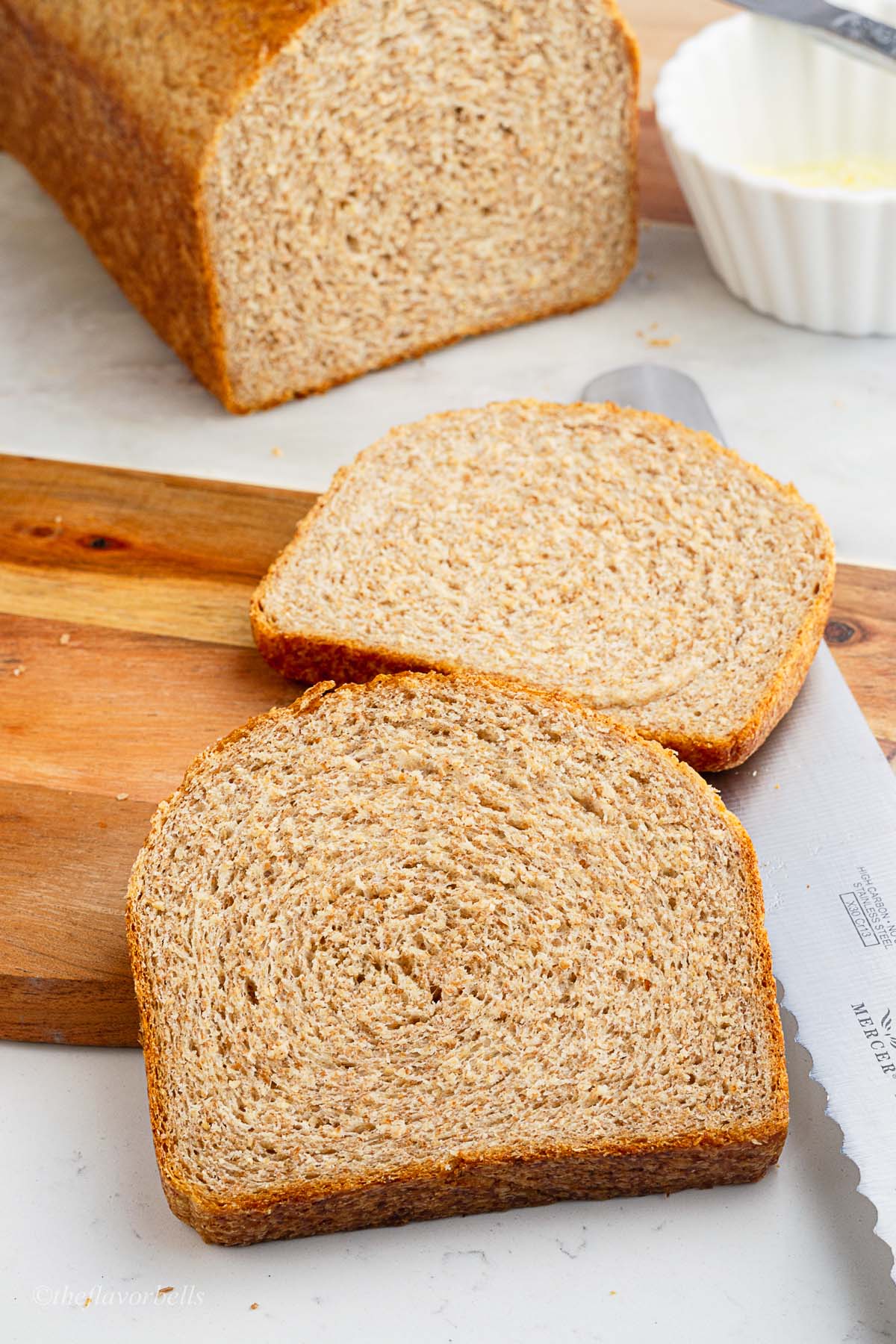
🔗More Whole wheat recipes
- 100 percent whole wheat pita bread recipe
- Sourdough rustic whole wheat bread
- Rye sourdough bread
- Dairy free whole wheat bread
- Multigrain bread
This 100 percent whole wheat sourdough bread recipe is hearty, wholesome, and perfect for everything from wheat sandwiches to simple whole wheat toast. I hope you’ll give this recipe a try and share the joy of baking homemade whole wheat bread in your kitchen!
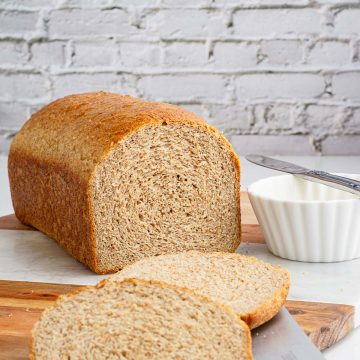
100 Percent Whole Wheat Bread
Ingredients
- 400 g whole wheat flour (about 3 ¼ cups)
- 25 g vital wheat gluten (about 3 tbsp)
- 18 g wheat bran (about 3 tbsp)
- 290 g warm milk (about 1 ¼ cups)
- 8 g salt (about 1 ½ tsp)
- 7 g instant yeast (about 2 ¼ tsp)
- 8 g sugar (about 2 tsp)
Instructions
Combine the dough
- In the bowl of a stand mixer fitted with a dough hook, add whole wheat flour, bran, vital wheat gluten, sugar, salt, and yeast. Slowly pour in warm milk while mixing on low speed until a shaggy dough forms.
- By hand: Mix with a spoon or dough whisk, then bring the dough together with your hands. The dough will feel sticky at first—this is normal with 100% whole wheat.
Knead the dough
- * If kneading in a Stand Mixer: Knead on medium speed for 8–10 minutes.* If kneading by hand: Knead for 12–15 minutes.
- The dough should become smooth, elastic, and stronger. The vital wheat gluten helps counter the weakening effect of bran in the flour.
First rise (bulk fermentation)
- Transfer the dough into a lightly oiled bowl. Cover with a damp towel or plastic wrap and let rise at room temperature until doubled in size (about 1–2 hours, depending on your kitchen).
Shape the dough
- Punch down the dough gently to release air. Place it on a lightly floured surface, then shape into a tight log. Transfer to a greased loaf pan, seam side down.
Proof the dough
- Cover and let the shaped loaf rise again for 30–45 minutes, until it rises about 1 inch above the rim of the loaf pan. Avoid over-proofing to prevent collapse during baking.
Bake
- Preheat oven to 375°F (190°C). Bake for 30–35 minutes, until golden brown. The bread should sound hollow when tapped on the bottom, or register 200°F (93°C) internally.
Cool and slice
- Remove the bread from the pan and cool completely on a wire rack before slicing. This prevents a gummy texture and ensures clean slices.
Notes
- Vital Wheat Gluten: Essential for structure in 100% whole wheat bread. Don’t skip it!
- Milk substitution: You can replace milk with water for a dairy-free version, but milk makes the crumb softer and richer, so go for no-dairy milk like oat milk, etc.
- Storage: Wrap tightly and store at room temperature for up to 3 days. For longer storage, freeze sliced bread in a zip-top bag.
- Serving ideas: Toast with butter and honey, make hearty sandwiches, or pair with soups and stews.
Nutrition
🫙 🔥 Storage and Reheating Instructions
- Store the cooled loaf in a paper bag or bread box at room temperature for up to 3 days.
- For longer storage, slice and freeze the bread in airtight bags. You can toast slices directly from frozen for quick wheat toast.
- To refresh, wrap the loaf in foil and warm it in the oven at 300°F (150°C) for 10 minutes.
❓ FAQs
Yes, 100 percent whole wheat bread is considered one of the healthiest bread choices because it is made entirely from whole grains. Unlike refined white bread, it retains the bran, germ, and endosperm of the grain, making it rich in fiber, vitamins, and minerals. The fiber helps in digestion, keeps you full for longer, and may support better blood sugar regulation. Many people also enjoy using it for whole wheat sandwiches or wheat toast, making it a versatile and nourishing option for daily meals.
For people with diabetes, 100 percent whole wheat bread can be a better option compared to white or refined breads. Since it is made from whole grain wheat flour, it digests more slowly, leading to a steadier rise in blood sugar. Pairing it with protein or healthy fats further reduces blood sugar spikes. That being said, portion control is important—too much bread of any kind can affect blood sugar. Opting for a homemade whole wheat bread recipe ensures there are no unnecessary additives or hidden sugars.


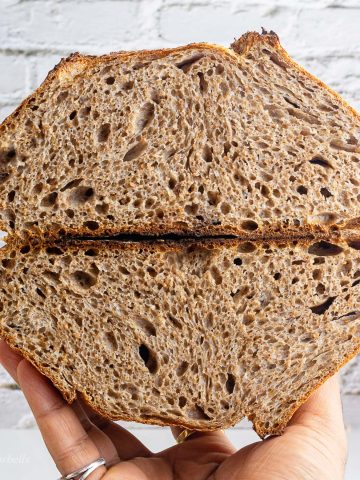



Leave a Reply